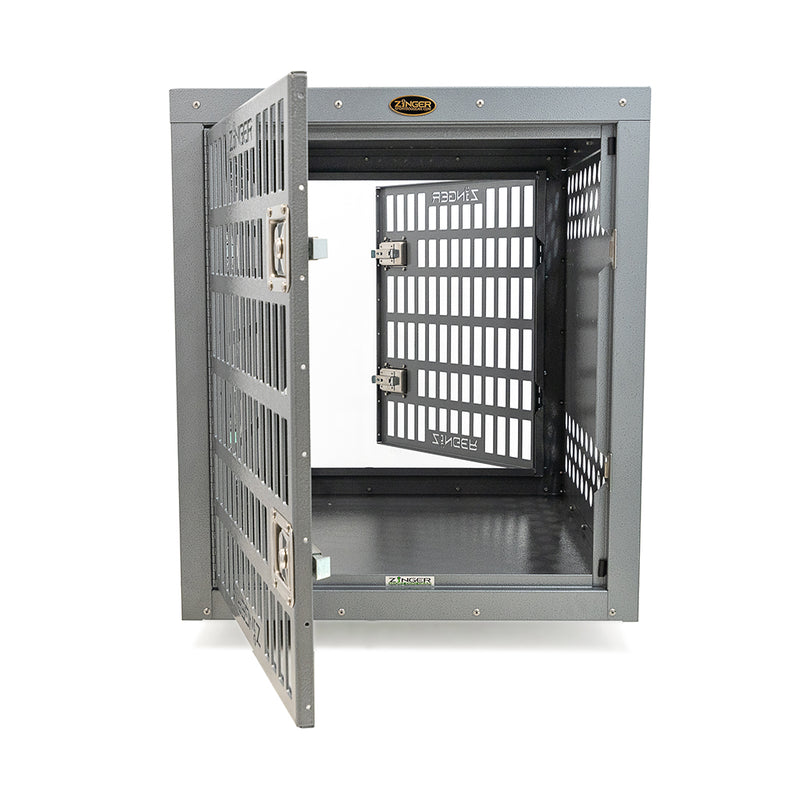Your Cart is Empty
Electronic Collars
Collars and Leads
Dog Tracking Systems
Dog Training
Bird Launchers
Hunting Dog Supplies
For The Hunter
Wired vs Wireless Pet Containment Systems
April 12, 2021 3 min read

Every dog owner wants to be able to let their dog out to run around in the yard, but not all dogs will stay in the yard without running off. What are your options if you have a dog like this? Every time you take the dog outside, you have to keep them on a lead or you have to use a stakeout that is in your yard, which ties the dog to a small radius.
However, there are other options. This is where electric containment systems come into play. These containment methods use static stimulation, tone, or vibration (the same training features as a remote e-collar system) to keep your dog in a pre-determined area of your yard. Containment systems are available in two types: a wired containment system and a wireless containment system. In this article, we are going to break down these two types of containment systems, discuss advantages and disadvantages of each, and offer the best option for your situation.
Wired Fences Containment Systems
A wired containment system is utilizes a wired border to determine the area that your dog has to stay within. This wire is run a few inches under the ground to create a loop boundary, starting at the wall-mounted unit, looping through the area, and then back to the unit.

The biggest advantage to this type of containment system is that it allows for custom boundaries, forming around other structures because not every yard is a nice square. Another great feature of these styles of systems is that they allow for a large containment area. Most systems come with 1,000 feet of wire, but with the purchase of additional wire, you can build an even larger containment area. Some of these systems can be built as large as 100 acres of area, if you were willing to run that much wire.
With the good, there comes some bad. There are two disadvantages to this style of containment system. The first being that you have to dig, run, and bury the boundary wire. This could mean hours of digging or having to rent equipment for placing the wire. The second disadvantage is that if there is a break anywhere along the boundary wire, the system will stop working until you locate the break and correct it. Depending on the size of your containment area, this could pose as quite a challenge.
Wireless Containment Systems
A wireless containment system uses a wireless signal to form a boundary area; this is usually centered on the wall-mounted unit. These areas are normally limited to a circular or semi-circular radius for the wall-mount transmitter.

The major advantage of the wireless containment systems is that you do not need to dig or run wire. Another advantage is you never have to worry about a break in the wire shutting down the entire system. The final advantage is that it easy to set up and portable; many people take them along on camping trips and set them up at their camp site.
Unfortunately, with the wireless containment systems, you are limited to the size and shape of the containment area. For example, the PetSafe Stay and Play Wireless Fence System are limited to a circular radius with a max of 3/4 acres, which is about 105 feet in each direction from the transmitter unit.
Conclusion
If your goal is to give your dog(s) free ranging ability, both a wired or wireless containment system is going to give them that freedom. If you are looking for a system that is quick to setup and is portable, then the wireless system is for you. If you are looking for over 3/4 acres of area and don’t mind having it as a permanent setup, then the wired containment system is best for you.
Thank you for reading. Hopefully you’re now closer to giving your dog free ranging ability in your yard, while also keeping the peace of mind that they won’t run off.
- Michael Cassatt, LCS Director of Marketing
Leave a comment
Comments will be approved before showing up.
Subscribe
Sign up to get the latest on sales, new releases and more …
Featured Products

Subscribe
Sign up to get the latest on sales, new releases and more …



